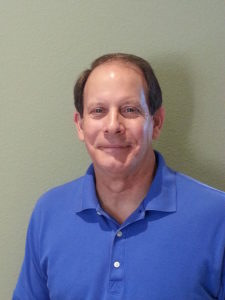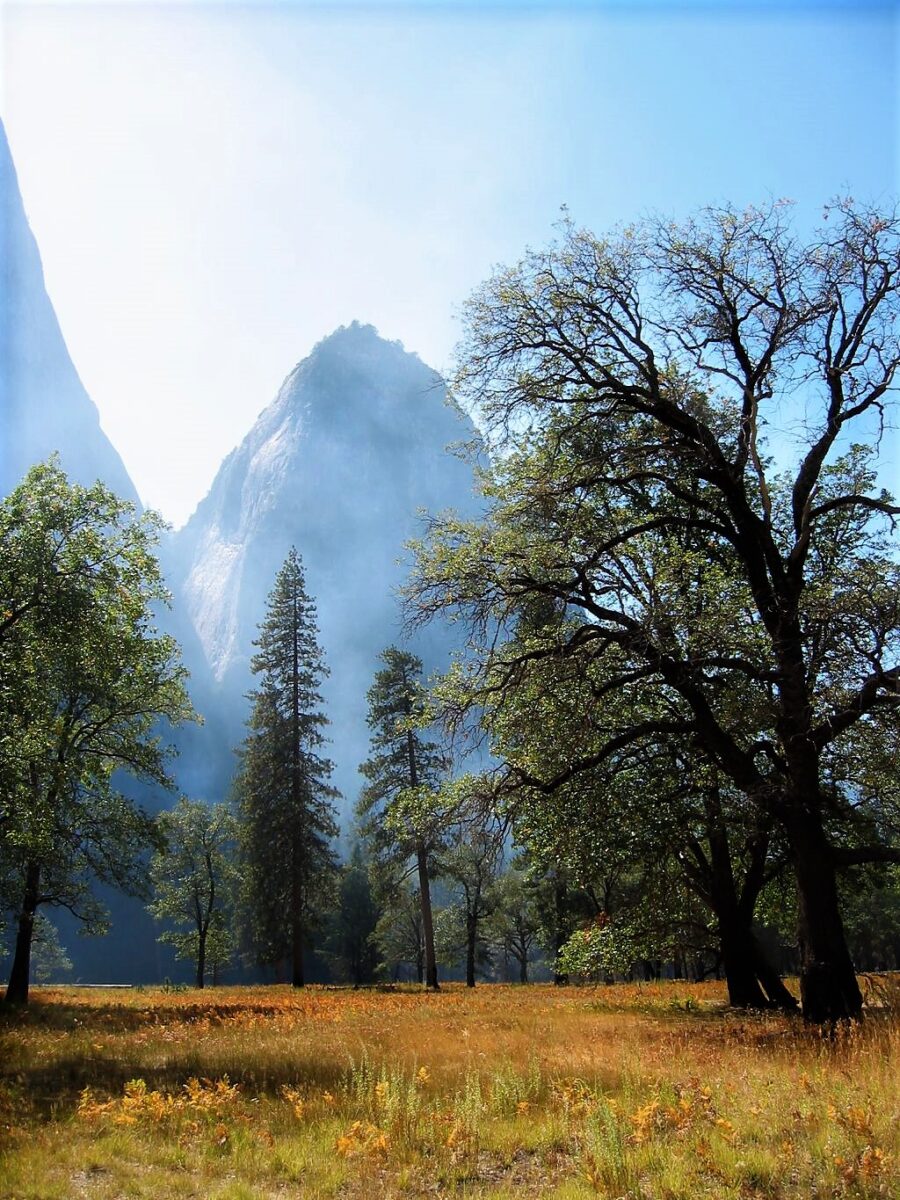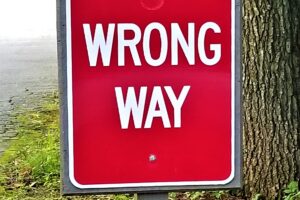
In Part 1 (July 28, 2017), I examined God’s answer when Moses asked God His name (“Who shall I say sent me?”). “I AM” was the answer, which reveals a lot about God, the eternal and unchanging One– the all-powerful God of the universe who always was, is, and will be. This question was asked before Moses led the children of Israel out of slavery in Egypt on a journey which became known as the Exodus. The final plague which convinced Pharaoh to release the Israelites from captivity was the death angel which took the lives of the Egyptian first born males. For the Israelite households who had the blood of a lamb smeared above the door, death was spared. This event where the Israelites were not only spared death, but passed through the door from bondage into freedom became known as Passover. While on the Exodus, Israel was led by a pillar of fire by night (light) to show the way. They were fed supernaturally for the 40 years of the Exodus with bread from Heaven called manna. Part 1 concluded by studying the words of Jesus some 1400 years later when he came to the children of Israel and revealed His identity. In the Book of John, He said I AM the bread of life, I AM the light of the world, and I AM the door. He spoke volumes about who He was by demonstrating that He was a concealed yet active part of the stories and celebrations that had been passed down through the culture for generations concerning what God had done for Israel during the Exodus. He did not say He was symbolic of the door, or that He provided the light or the bread. He said He was (I AM—still is) the bread, the light, and the door.
Now in Part 2 of this series, we will look at the final four “I AM” statements of Jesus, all from the Book of John:
- John 10:11- “I AM the good shepherd. The good shepherd lays down his life for the sheep.” The blood on the Passover door was symbolic of His blood that would be shed on the cross. Regarding a good shepherd, He goes on to say He is not a hired shepherd, but is the owner of the sheep, which results in a higher level of care (v.12). He will not run away when the wolf attacks (v.13). In v. 14 He said- “I know my sheep and my sheep know me.” In v.16 He said- “I have other sheep that are not of this sheep pen (Judaism). I must bring them also.” This is an obvious reference to the expansion of the Christian faith to the Gentiles because He goes on to say “They too will listen to my voice, and there will be one flock, and one shepherd.” (v.16) He is a good shepherd, willing to die for His sheep, but all of God’s people will have one shepherd in this glimpse of the future worldwide church.
Psalm 23 paints a beautiful picture of the Lord as our shepherd. The shepherd was a widely used metaphor for a king, so when King David wrote this Psalm, he was acknowledging the Lord as his King/Shepherd. Without quoting the Psalm (although I encourage reading it), David says there is not a time the sheep are in want, because the shepherd gives them rest in green pastures, and leads them to quiet, peaceful water where they are restored. The sheep do not fear their enemies because the shepherd protects them. They feel goodness and love from the shepherd, so they are nurtured into their full potential. The sheep want nothing except to be in the presence of their shepherd. Jesus is the Good Shepherd.
- John 11:25-26- “I AM the resurrection and the life. He who believes in me will live, even though he dies; and whoever lives and believes in me will never die.” Jesus makes it clear in this statement that he is the Lord over life and death itself. He was present at Creation, and everything was created by Him and for Him (Col. 1:16). He is the Lord and Giver of life. Our physical bodies will wear out and die, but we are spiritual beings created in His image, so that our spirit-man lives eternally. If our natural lives are lived in and with Jesus, we live eternally with him in Heaven.
Jesus made this statement to Martha, whose brother Lazarus lay dead for four days. To show His complete power over life and death, Jesus then resurrected Lazarus from the dead, calling him out of the tomb after four days of decomposing. If He can resurrect a decomposed body, He can resurrect anyone or anything from the dead. I have personally seen Him resurrect dead marriages, and lives lost to drugs, alcohol and pornography. I have even seen Him resurrect demon-possessed lives that appeared to be in Satan’s full grasp and control. He can not only come in to rescue and resurrect the spiritually and physically dead to life, but when those lives commit to follow Him, they need never fear death again.
- John 14:6- “I AM the way and the truth and the life. No one comes to the Father except through me.” Notice He did not say He would show us the way, tell us the truth, and give us life. He said I AM the way, the truth, and the life. There are many religions on the earth seeking “the way”, but there is no way to come to the true Father God, and receive eternal life in heaven except by coming through Jesus. He is the only way to eternal life, and the only source of victory in this present life. Regarding truth, philosophers through the ages have discussed and debated the concept of truth—what is truth? Truth is not a concept—it is the person of Jesus. We also know throughout history, groups of people have searched for the meaning of life. Why do I exist, and what is the purpose of life? Is there an after-life? Jesus answered all of these deeply controversial questions in two short sentences. He is the way through this life and into the life eternal. He holds the power over life and death. All truth is embodied in the person of Jesus, and those who abide in Him will know the truth. The Bible says it is the knowledge of the truth (Jesus) that sets us free (John 8:32). Jesus asked His own disciples to believe this powerful and sweeping statement “on the evidence of the miracles themselves” (John 14:11)—I AM (He is) the way, the truth, and the life.
- John 15:1- “I AM the true vine.” In this seventh and last I AM statement, Jesus refers to the vine, an Old Testament symbol of Israel. He is saying that out of all the history of Israel, and the writings of Moses, the kings, and the prophets, and out of all their encounters with God who chose Israel as His people, Jesus is the main point or objective. Everything focuses on Jesus, and it is all by and for Him. He is at the center of where God had led these people. He then made a number of statements concerning the vine. In verse 1 and 2, Jesus said His Father is the gardener, cutting off branches that bear no fruit, and pruning productive branches to bear even more fruit. Verse 4 says “no branch can bear fruit by itself; it must remain in the vine. Neither can you bear fruit unless you remain in me.” Verse 5 says “I am the vine; you are the branches.” If we remain in Jesus, we bear much fruit. Apart from Him we can do nothing. If we bear much fruit, we show ourselves to be His disciples (v.8). Finally (v.7)-“If you remain in me, and my words remain in you, ask whatever you wish, and it will be given to you. This is to my Father’s glory.”
This gives a clear picture of how unsuccessful we will be if we try to live and do anything apart from Jesus. Our lives and devotion are to be so intertwined in and with Him that we are a branch of His vine. We flourish and are fruitful because of Him, and without Him we are like a dead branch cut off the vine. There is no life support tied to anything other than Jesus. However, a life tied in to the vine of Jesus is unbelievably rich and productive, full of purpose and satisfaction because it is then Him living in and through us.
In summary, John 20:31 – “But these (words of the Book of John) are written that you may believe that Jesus is the Messiah, the Son of God, and that by believing you may have life in His name.” (Insert mine.) John’s purpose was to convince the unbeliever of who Jesus was, and so he captured all seven of the “I AM” statements of Jesus to cement the explanation. God began the explanation of “I AM” to Moses, and Jesus finished the explanation in the Book of John. He went on to say “I and the Father are one.” (John 10:30), and “anyone who has seen me has seen the Father.” (John 14:9).
When Jesus walked in Galilee, He told the people quite a lot about Himself. He then proved His incredible statements with signs and wonders. Today people still ask “Who is Jesus?” The “I AM” statements recorded in the Book of John the disciple still provide the answer—“I AM” the bread of life, the light of the world, the door, the good shepherd, the resurrection and the life, the way the truth and the life, and the true vine.



